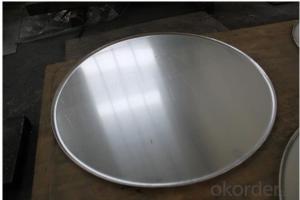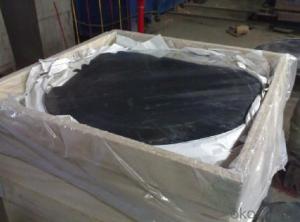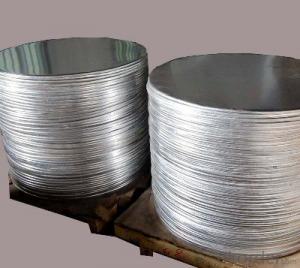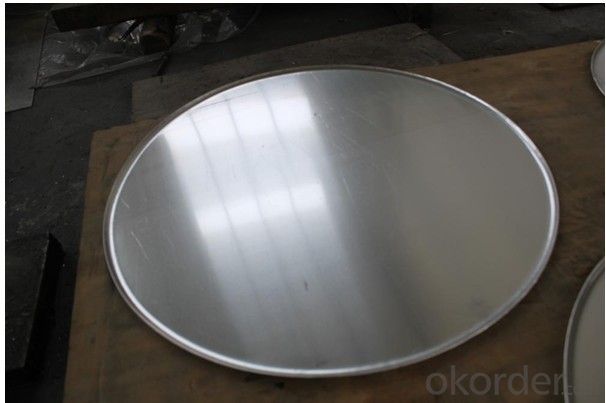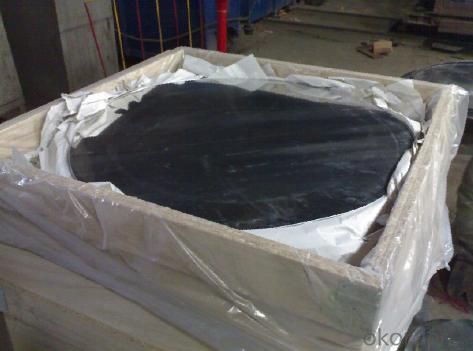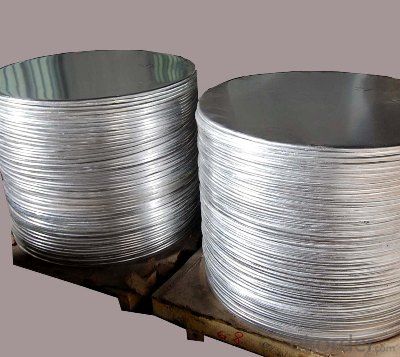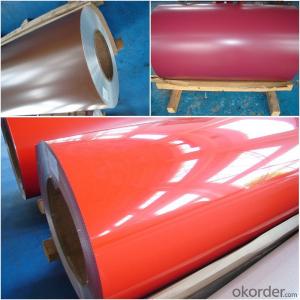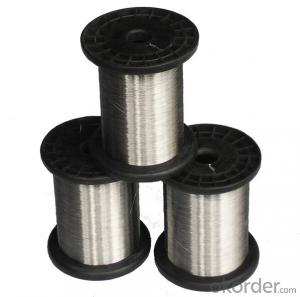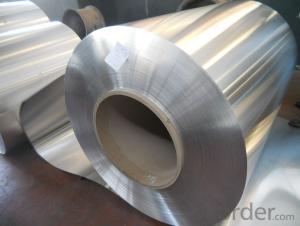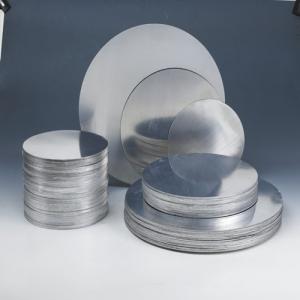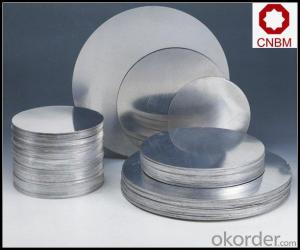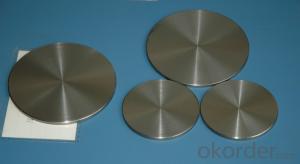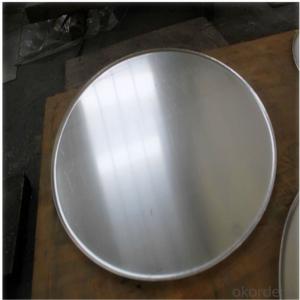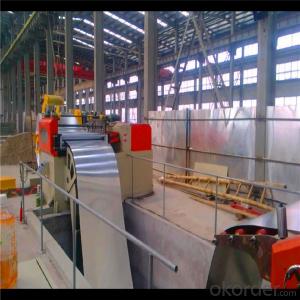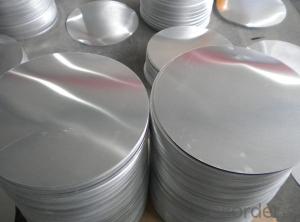Anodized Aluminum Deep Drawing Circles HR AA5052 0.2mm-2mm
- Loading Port:
- Shanghai
- Payment Terms:
- TT OR LC
- Min Order Qty:
- 2 m.t.
- Supply Capability:
- 2000 m.t./month
OKorder Service Pledge
OKorder Financial Service
You Might Also Like
Specification
1.Structure of Deep Drawing Aluminium Circle
Deep Drawing Aluminium Circle is one semi-finished aluminium material. Aluminium Circle is widly used cookware, for example, aluminium pot, aluminium pan, aluminium cup ect. Our aluminium circle are widly exported to African market. We export more than 2000 tons every month. We can assure the breakage rate below 5%. Extra breakage will be responsible by our company.
2. Main features of the product
a.Competitive price---We have our own mills and can produce mill finished aluminium coils, so we can control the production cost better.
b.Professional after-sale service---We have more than 15 years exportation experience and you need not worry about the exporation problems.
c.Fast delivery time---We can control the delivery time within 35 days.
3. Image
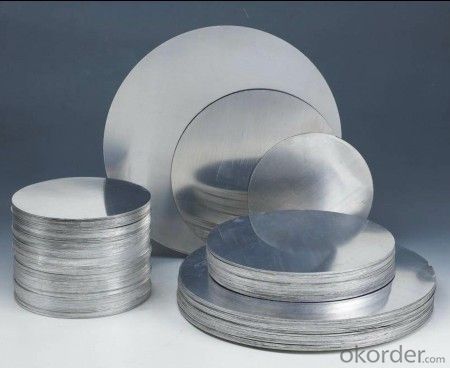
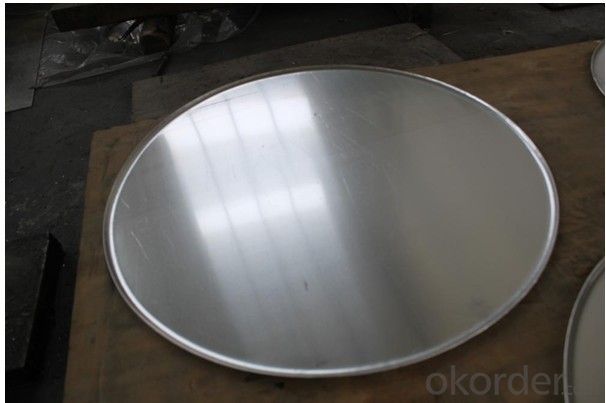
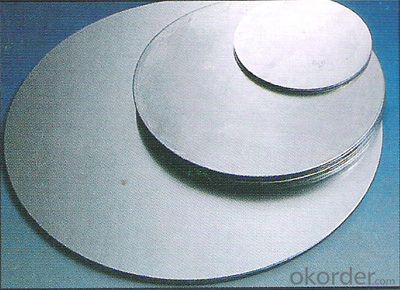
4. Product Specification
| Alloy | Thickness | Diameter | Weight | Style |
| AA5052 | 0.2MM-2MM | 100MM-1000MM | 2 TONS | DEEP DRAWING |
5.FAQ:
What is the quality standard?
---Usually our standard is GB3880-2006
What is the largest width?
---It is 2300mm
What is the MOQ?
---Usually we can accept 2 tons.
- Q: I am thinking about getting a MacBook Aluminum or a MacBook white. The Aluminum is 2.0 GhZ and the MacBook White is 2.16 GhZ. which should i get? also i am really wondering if you can upgrade the processors in both MacBooks..... Please give me link if you can. THANKS!!
- The aluminum will definitely be faster than the white one assuming those clock speeds are accurate. The 2.16 is an older model with an early Core 2, slower RAM, and a much slower video card. And you cannot swap the CPU in any of Apple's laptops made over the past decade or so.
- Q: So my new farrier comes out tomorrow and charges $20 more for aluminum shoes and I was wondering why that is? Is one better than the other? My horse is a TB hunter jumper. Tell me what you think :)
- Aluminum has no wearability. Steel shoes can be re-set a number of times, which can save you money. If you ride your horse out on trails at all, you'll go through shoes like crazy. Aluminum is such soft metal that it's really not practical for most horses.
- Q: How do you prevent warping of aluminum sheets during bending?
- One way to prevent warping of aluminum sheets during bending is by using proper techniques and tools. This includes using the correct bending radius, ensuring even distribution of pressure along the sheet, and employing a suitable clamping method to hold the sheet in place during the bending process. Additionally, preheating the aluminum sheet can help to reduce the likelihood of warping.
- Q: Does anyone know anything about the value of aluminum can(beer, soda, etc.) pull tabs? I have heard a rumor that the tabs are worth more than the cans and that a gallon jug of tabs can be sold at recycling centers for several hundred dollars.Anyone know if this is really true?
- This okorder posting stating tab redemption to be a myth, The type I silver aluminum pull tab (the normal pop can tab which accounts for 96.21% of the U.S. market) weighs in at about 0.65 pounds per thousand (0.0104 ounces each). These tabs have no special value other than the fact that they are scrap aluminum. A gallon of tabs is about 3,400-4,700 tabs (they is no way to get an exact number, as I have recorded 156 different tabs, and there is the matter of the little curly thing which tangles all the tabs together and can affect volume by up to 36%), so a gallon should weigh in close to 2.65 pounds. As scrap aluminum is going for 50 cents to a dollar, depending where you live, yoiu would therefore have a value of $1.33 to $2.65 in metal.
- Q: This question asks about the various color options available for aluminum sheets.
- <p>Aluminum sheets are available in a wide range of colors to suit various applications and aesthetic preferences. Common colors include silver (anodized), white, black, and clear (natural). Beyond these, there are also options for colors like red, blue, green, and yellow. Some manufacturers offer custom color matching services for specific projects. Additionally, aluminum sheets can be coated with various finishes such as matte, gloss, or textured, further expanding the color and appearance options. It's important to check with specific suppliers for their available color range as it can vary.</p>
- Q: Are aluminum sheets suitable for electrical transformers?
- Yes, aluminum sheets are suitable for electrical transformers. Aluminum has excellent electrical conductivity, lightweight properties, and good thermal conductivity, making it an ideal choice for transformer applications. Additionally, aluminum is cost-effective and readily available, further contributing to its suitability for use in electrical transformers.
- Q: What is the lifespan of the aluminum sheets?
- The lifespan of aluminum sheets can vary depending on various factors such as the quality of the material, the environment they are exposed to, and the maintenance they receive. However, with proper care and maintenance, aluminum sheets can last for several decades.
- Q: Is it possible to use aluminum sheets in extreme weather conditions, including very hot and very cold temperatures?
- <p>Yes, aluminum sheets can be used in harsh environments, including hot and cold climates. Aluminum is known for its excellent corrosion resistance and durability, making it suitable for various weather conditions. It does not rust and maintains its strength in both low and high temperatures. However, it's important to consider the specific alloy and protective coatings used, as these can affect performance in extreme conditions. Properly treated and coated aluminum can withstand significant temperature fluctuations without significant degradation.</p>
- Q: What are the different methods of surface laminating aluminum sheets?
- There are several methods of surface laminating aluminum sheets, including adhesive bonding, roll bonding, and extrusion. Adhesive bonding involves using an adhesive to attach a layer of material onto the surface of the aluminum sheet. Roll bonding involves passing the aluminum sheet through a set of rollers, which bond a layer of material onto the surface. Extrusion involves forcing the aluminum sheet through a die, which applies a layer of material onto the surface. These methods provide different options for achieving surface lamination based on the desired application and requirements.
- Q: Are aluminum sheets suitable for chemical filtration applications?
- Aluminum sheets prove to be a fitting option for chemical filtration applications. Renowned for its outstanding corrosion resistance and durability, aluminum emerges as a trustworthy selection for chemical filtration systems. It diligently sieves out impurities and contaminants across diverse chemical procedures, encompassing the separation of solids from liquids and the elimination of hazardous substances. Furthermore, aluminum sheets boast resilience against elevated temperatures and pressures, rendering them well-suited for an extensive array of chemical filtration applications.
Send your message to us
Anodized Aluminum Deep Drawing Circles HR AA5052 0.2mm-2mm
- Loading Port:
- Shanghai
- Payment Terms:
- TT OR LC
- Min Order Qty:
- 2 m.t.
- Supply Capability:
- 2000 m.t./month
OKorder Service Pledge
OKorder Financial Service
Similar products
Hot products
Hot Searches
Related keywords
